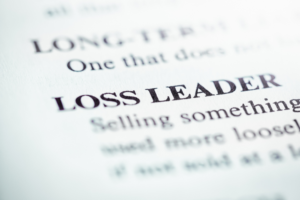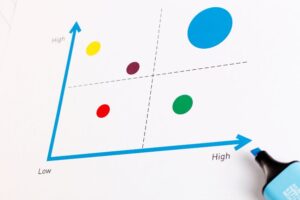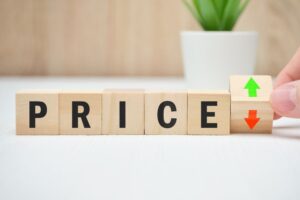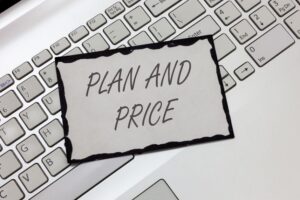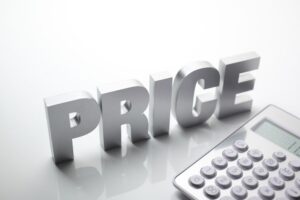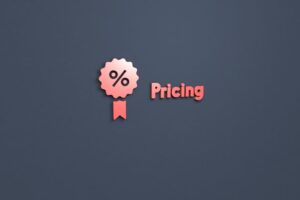Introduction
Pricing is one of the most important factors businesses consider when launching a new product or service. Determining the right price point can be challenging, as it needs to be competitive while allowing for a profit margin.
One popular pricing strategy that some businesses adopt is price skimming or skimming pricing. This strategy involves setting an initially high price for a new product or service and gradually lowering it over time. This approach can effectively generate high profits in the early stages of a product’s life cycle when demand is typically high. Consequently, you must learn to manage your sales pipeline effectively.
Is skimming pricing right for my business? Does it guarantee higher profits? How do I implement it in my business? This article answers these questions and more.
Read on to find out whether price skimming is viable for your business and how to implement it effectively if you decide to use it.

What is Skim Pricing?
Skim pricing, or price skimming, is a strategy where a company sets a high price for a new product or service during its initial launch phase and gradually reduces costs over time.
This approach is often used by companies that offer innovative or technologically advanced products, such as electronics or software, as it allows them to maximize profits during the early stages of the product’s life cycle when demand is high, and competition is limited.
The basic idea behind price skimming is to take advantage of early adopters willing to pay a premium price to be the first to own a new product. By setting a high price initially, the company can earn high-profit margins and recoup its development and launch costs more quickly.
As demand for the product stabilizes and competition increases, the company can gradually reduce the price to reach a broader market and maintain sales momentum. The success of this strategy depends on several factors, such as the level of competition, the perceived value of the product, and the elasticity of demand.
For example, if a product is perceived as overpriced or demand drops too quickly after the initial launch, price skimming may be ineffective and could result in lost sales and negative perceptions among customers.
Advantages of Skimming Pricing
Like every other business strategy, price skimming has its advantages. These advantages include:
1. Increased Profit Margins
Price skimming allows businesses to set a high price for a new product. This way, they can increase revenue in the early stages of the product’s life cycle. The skimming price strategy is particularly important for businesses that have invested heavily in research and development, marketing, and other costs associated with launching a new product.
2. Better Resource Allocation
Generating higher profits in the early stages of a product’s life cycle can provide a financial cushion that companies can use to fund further research and development, as well as marketing and advertising efforts to attract a wider audience.
3. Competitive Advantage
Price skimming can give businesses a competitive advantage by positioning the product as high-quality and exclusive. This perception can attract early adopters willing to pay a premium price for the product. About 73 percent of online stores said price changes are the main factor of competitive pressure.
4. Flexible Pricing
Price skimming allows businesses to adjust the product’s price over time to maintain sales momentum while maintaining healthy profit margins. As the market becomes more competitive and demand stabilizes, companies can gradually reduce the product’s price to reach a broader market.
Disadvantages of Skimming Pricing
Earlier, we discussed the benefits of price skimming. But is the skimming price strategy without its drawbacks? Read on to learn the possible disadvantages of price skimming.
1. Limited Market
Skimming pricing can limit the market for a new product, as early adopters who are willing to pay a high price are typically a small segment of the overall market. This situation can be problematic for businesses that need to generate significant sales volume to recoup their investment and turn a profit.
2. Negative Perceptions
If the initial price is too high, it could lead to negative perceptions among customers. They might perceive the product as being overpriced or having little value, which could hurt the brand image and negatively impact future sales. Tools like Brand24 can help you monitor what people think of your brand.
3. Legal and Ethical Concerns
Setting a high initial price could raise legal and ethical concerns. For example, it could be seen as price gouging, which is illegal in some jurisdictions. It could also lead to accusations of deceptive pricing practices or anti-competitive behavior, which could damage the business’s reputation and lead to legal action.
4. Risky Investment
Price skimming is a risky investment strategy as there is no guarantee that the product will be successful. If the product fails to meet customer expectations or does not generate sufficient sales volume, the business could lose its investment, impacting the business’s overall financial health and future investment opportunities.
MORE: Is a charm pricing strategy right for your business?
Examples of Price Skimming
1. Apple Inc.
Whenever Apple releases a new product, such as the iPhone or the MacBook, they set a high initial price to target early adopters and those willing to pay a premium price for the latest technology. As time goes on, they lower the price to attract more customers and increase sales volume.
In an interview with Bloomberg Businessweek, Apple CEO Tim Cook said:
“We never had an objective to sell a low-cost phone. Our primary objective is to sell a great phone and provide a great experience, and we figured out a way to do it at a lower cost.”
2. Luxury Fashion Brands
Luxury fashion brands such as Chanel, Prada, and Louis Vuitton set high prices for their clothing, handbags, and accessories to create a perception of exclusivity and luxury. After the design has trended for a while, they may offer discounts to clear inventory or make way for new collections.
Bernard Arnault, the founder of Louis Vuitton, once said:
“Any fine luxury item or collectible piece is worth only as much as the buyer is willing to pay.”
3. Gaming Consoles
When Sony released the PlayStation 5 in 2020, they used a price-skimming strategy by setting an initial price of $399 for the console. Nevertheless, it sold out quickly as the COVID-19 lockdown drove up the number of early adopters.
When to Apply Skimming Pricing in Your Business
1. Innovation
Skimming pricing is often used when introducing new and innovative products to the market. If your product offers unique features or benefits that are not available in other products, you may be able to set a higher price point to capture the value that your product provides.
When Apple introduced the iPhone in 2007, it was a new and innovative product that offered unique features such as advanced sensors and a fun-to-use web browser. Apple was able to set a high price point for the iPhone due to its unique features and the fact that there were no comparable products on the market at the time.
2. Market Demand
Skimming pricing can be an effective strategy when there is high demand for your product. Setting a high price point will help you maximize your profits by capturing the value that customers are willing to pay for your product.
Despite growing luxury-goods prices, consumer demand remains strong. In this niche, the desire for high aesthetic appeal and exclusivity thrives over the pursuit of high quality.
3. Limited Production Capacity
Skimming pricing may be appropriate when your production capacity is limited. By setting a high price point, you can limit demand for your product and avoid having to deal with supply shortages or backorders.
For example, when the Nintendo Switch was first introduced, there was high demand for the product but limited supply. Nintendo uses skimming pricing to limit demand for the product by setting a high price point.
4. High Development Costs
Skimming pricing can help you recoup your development and marketing costs quickly. If you have invested a significant amount of money in developing your product, you may need to set a high price point to ensure that you can recover your costs.
When Not to Apply Skimming Pricing in Your Business
1. Competitive Market
In a market with many established competitors, customers have multiple options and may not be willing to pay premium prices for a new product or service.
For example, if you’re a new player in the smartphone market, skimming pricing may not be the best strategy, as customers already have established brands to choose from.
2. Limited Customer Base
In a niche market with a limited customer base, customers may be price-sensitive and may not be willing to pay a premium price for a new product or service.
For example, if you run a small coffee shop in a small town, skimming pricing may not be the best strategy as customers may not be willing to pay higher prices for coffee.
3. Limited Budget
Skimming pricing often requires significant investment in research and development, marketing, and advertising. If your business has limited resources or a tight budget, skimming pricing may not be feasible.
For entrepreneurs running small blue-collar businesses, skimming pricing may not be suitable as they may not have the budget for expensive marketing campaigns to attract customers.
4. Perishable Products
Perishable products have a limited shelf life, and high initial prices may lead to unsold inventory and waste.
For example, if you run a fresh produce business, skimming pricing may not be the best strategy, as customers may not be willing to pay a premium price for produce that has a short shelf life.
How To Implement Price Skimming
Here’s a list of factors you should take into consideration before and when implementing a price skimming strategy.
1. Conduct Market Research
To implement a flawless skimming price strategy, you must understand the needs and preferences of your target market. A tool like SurveySparrow can help you create and distribute surveys to a target audience.
You can then analyze their responses to gain insights into customer preferences, needs, and behavior. SEMrush is another excellent tool that provides insights about competitors, keywords, and search engine rankings.
2. Set the Initial High Price
Once you have identified the optimal price point, you can set the initial high price for your product. This price should be high enough to generate high-profit margins but not so high that it deters potential customers.
3. Create a Sense of Exclusivity
To justify the high cost to early adopters, it is important to create a sense of exclusivity and value around your product. This step can involve targeted marketing and advertising campaigns, as well as building relationships with key influencers and opinion leaders in your industry.
4. Monitor Sales and Adjust Pricing
As demand for your product stabilizes and competition increases, it is important to monitor your sales and adjust your pricing strategy accordingly. If sales are slow, consider lowering the price to attract more customers. If demand exceeds supply, consider increasing the price to maximize revenue. Pipedrive and Freshsales are excellent platforms for tracking all your sales.
5. Evaluate Results
Regularly evaluate your pricing strategy to ensure that it is effective. Monitor the competition, gather customer feedback, and analyze sales data to identify areas for improvement.
Takeaway Points
Price skimming can be highly effective under the right certain situations. However, you must consider your target market, competition, and production costs before implementing this strategy to ensure that it’s sustainable in the long run.
You must also acquaint yourself with the appropriate market research tools to understand your target audience and competition. Using the best tools helps to ensure efficiency.
Related Posts
Author
Methodology
- Who?
We are SaaS experts: Our specialists constantly seek the most relevant information to help support your SaaS business. - Why?
We are passionate about users accessing fair SaaS pricing: We offer up-to-date pricing data, reviews, new tools, blogs and research to help you make informed SaaS pricing decisions. - How?
With accurate information: Our website manager tests each software to add a Genius Score using our rating methodology to each product. Our editorial team fact-check every piece of content we publish, and we use first-hand testing, value metrics and leading market data.
